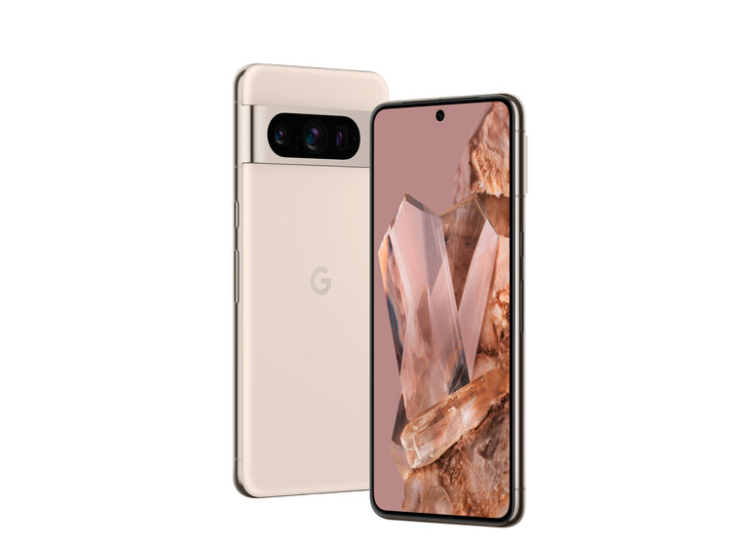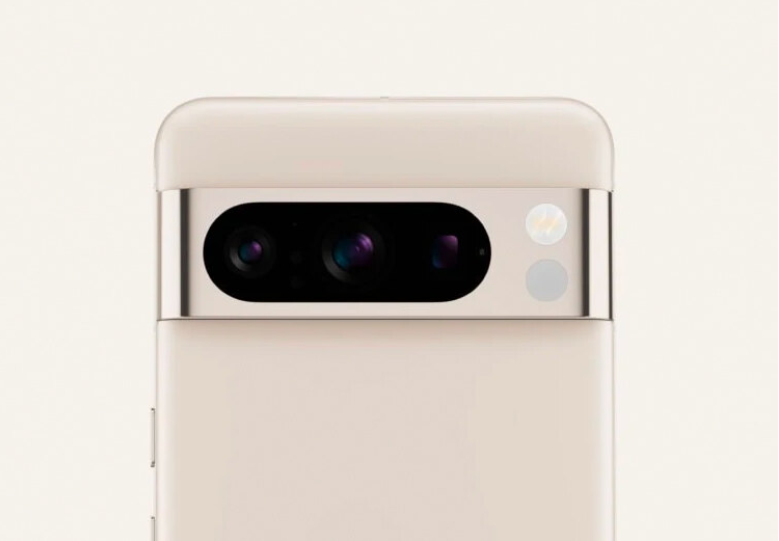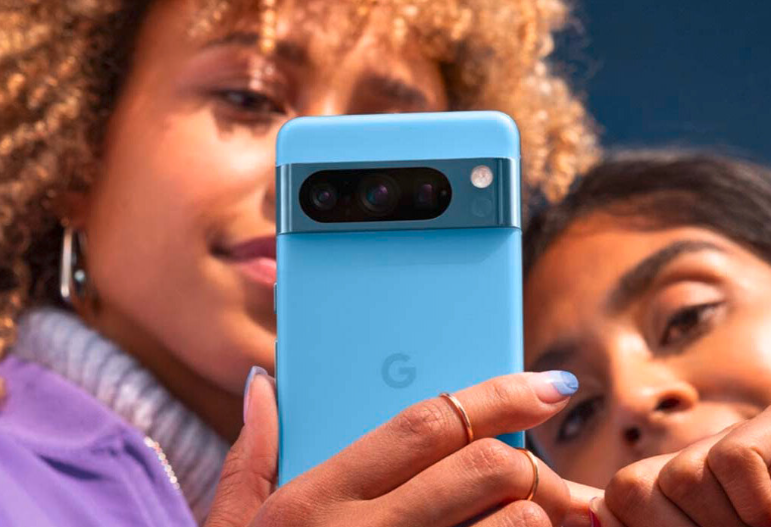The Pixel 8 Pro enters the mobile phone market with an increasingly sophisticated technical specification, complemented by AI at every level. However, Google’s flagship crosses the $1000 USD price threshold.
Finally, the official announcement has arrived. After a wave of leaks more intense than ever, the Pixel 8 Pro makes its debut in the mobile phone market during a “Made by Google” conference that also featured the Pixel 8, Pixel Watch 2, and Pixel Buds Pro.

The smartphone’s technical specifications show only subtle changes when compared to its predecessor, the Pixel 7 Pro. Once again, there is a 6.7-inch screen based on OLED technology, now referred to as the “Super Actua” screen in Google’s jargon. This LTPO display offers a variable refresh rate ranging from 1 to 120 Hz, a maximum brightness of 1600 nits (HDR) or 2400 nits (peak brightness), and a resolution of 1344 x 2992 pixels. This flat screen is now protected by Gorilla Glass Victus 2 and is integrated into a casing with dimensions similar to those of the Pixel 7 Pro (162.6 x 76.5 x 8.8 mm) and weighs the same at 213 grams.
The back of the device also features a few innovations. With a polished metal camera block, it boasts a matte, glass finish with refreshed colours (porcelain, blue, and black). However, one of the new features of the Pixel 8 Pro can be found here: its temperature sensor located under the camera flash. Although this sensor does not have a health-related purpose due to the absence of European certification authorities, it is capable of measuring the temperature of external objects. While the practical uses of such a sensor remain to be defined, we are eager to try it out.

The Pixel 8 Pro is also equipped with a Tensor G3 chip, which logically succeeds the Tensor G2 and powers the smartphone’s “intelligent” features. This chip, which Google claims is improved, still includes a Titan M2 security coprocessor and is accompanied by 12 GB of RAM. It’s worth noting that the device is compatible with Wi-Fi 7, and Bluetooth 5.3, and features a 5050 mAh battery that supports both 30 W wired charging and wireless charging (like the Pixel 7 Pro).
Pixel 8 Pro Photography and Video
However, the main strength of this smartphone remains its image capture capabilities. It relies on a main module that includes a 50-megapixel sensor with an f/1.68 lens that Google promises is 21% brighter than that of the Pixel 7 Pro. The ultra-wide-angle uses a 48 MP sensor (f/1.95 lens), significantly increasing the resolution compared to the Pixel 7 Pro (12 MP), and it now includes a macro mode starting from 2 cm and autofocus. There is also a telephoto module with a 48 MP sensor and an f/2.8 lens, which is brighter than that of the 7 Pro (f/3.5), offering the equivalent of a 5x zoom. Overall, Google promises much brighter images, with an improved Real Tone feature and enhanced “Pro” controls. It’s also worth noting the introduction of Night Vision mode for video, similar to the night mode available for photo capture, and a Video Boost mode aimed at providing precise processing of moving images, particularly to improve exposure.

The Tensor G3 chip is also utilized in the Best Take feature, which is now capable of combining multiple photos to “recreate” the perfect image when multiple subjects move during shots. Magic Editor now not only allows the removal of unwanted background elements but also the ability to outline and move certain elements within the image. In the realm of photography, it’s noteworthy that the selfie sensor gains autofocus and a more secure facial unlock, as it is now compatible with banking applications.
7 Years of High-Priced Updates
Google is emphasizing the numerous software features included with its Pixel 8 Pro. More natural conversations with the Assistant, automatic article summarization for offline reading, message correction features on Gboard, and new accessibility options are all part of the package. But one key point to remember is Mountain View’s new commitment: the smartphone is obviously launched with Android 14 and will receive seven years of OS updates, feature drops, and security updates. All of this comes at a price: while the Pixel 7 Pro costs $899 USD (128 GB), its successor will set you back $999 USD (128 GB). This price increase is one the smartphone will need to justify with flawless performance.
Related:
PRICE SHOCK: IS THE GOOGLE PIXEL 8 PRO WORTH THE HIKE?
GOOGLE PIXEL BUDS PRO LEAKED IMAGES: PORCELAIN AND BAY BLUE




